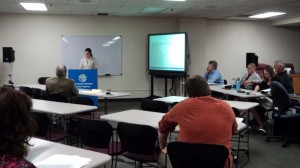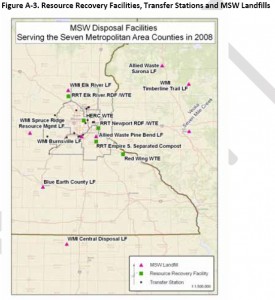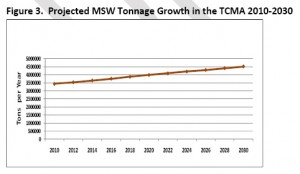Dayton “streamlines” for corporate interests!
January 24th, 2011
“Streamline” is code for “ram it through.”
Another one of those “change!” moments — look at what we’re getting:
So do tell, was this done to help push approval of Paul Aasen as Commissioner of MPCA? Show that Dayton will roll for big business over environmental review? There are such horrendous projects in the pipeline, ones that require a serious look, and ones that shouldn’t be permitted, period. P-O-L-Y-M-E-T! Need I say more? Oh, OK, how about 3M’s Cottage Grove Incinerator? Hennepin County’s HERC Incinerator?
Here’s his Press Release:
Dayton is right in line with Rep. Drazkowski — how scary can it get?
Comments on MPCA’s Metro Solid Waste Policy Plan?
October 18th, 2010
Get ready to fire off some Comments!
Last Thursday evening was a meeting at the MPCA about the Metro Solid Waste Policy Plan. It was a meeting, sparsely attended as you can see. And it was not a hearing, there is no record and… well… the plan? It’s lame to say the least, no plan at all!
Here’s what jumps out at me:
First, as a Red Wing resident, I note that the Xcel garbage burner is NOT on the map, only the City’s burner. Second, I note that Xcel’s Mankato burner is not on the map. EH? If they don’t know about or acknowledge these burners, what does that do for the credibility of this “report?”
More importantly, look at the skewed map. This is about METRO waste, but look where it’s going. It’s going out of the metro area. Greater Minnesota needs to institute a garbage tax, errrrr… fee, to force the Metro area to deal with its own waste and to institute serious recycling and Zero Waste programs. And they don’t separate out which is a “Resource Recovery Facility” and what is a burner in the legend. Maybe a big orange ire to denote burner?
Another big problem is this is classic GIGO. The forecasts are as off as the CapX 2020 electric demand forecasts:
They haven’t gotten the word that demand and growth is down down down, has been since 2007. But they’re basing it on old data and using inflated numbers. “(Note-In order to be conservative, this forecast is based on a high growth scenario…)” p. 10. High growth is NOT conservative, nor is their plan. So the first thing to do is scrap the whole thing because it’s based on old data, then redo the forecasts and start anew.
They admit that “Recycling contributes to the economy of the region,” but they don’t stress increasing recycling. It doesn’t take a rocket scientist to see that that is the highest priority.
And the biggest problem — they seem to accept stagnant recycling levels and rather than a big push on recycling and Zero Waste, they pus for more incineration, and talk of “available unpermitted, but installed capacity of 40,000 tons per year at HERC and 40,000 tons per year of unused permitted capacity at the Red Wing and Mankato RDF combustors,” is the last thing me and my allergies want to see or smell. Up here on the bluff, there are times that the wind blows it right in my windows. And then there’s the breast milk of Inuit women, toxics traced to the burners. Take burning off the table now.
Another thing that sticks in my craw — the notion of “stakeholders.” Who is a stakeholder? It’s the waste industry… specifically, Product Producers, Waste generators (residents, businesses, public entities), Waste industry, Government. I’ve seen the email list, and it’s industry, industry, industry.
Send Comments to:
tina.patton@state.mn.us
or
Metro Solid Waste Policy Plan Comments
MPCA
520 Lafayette Road North
St. Paul, MN 55155-4100
MPCA’s press release:
Comments on Enviromental Review “streamlining” due
October 13th, 2009
Minnesota’s “Executive Branch” is at it again, slashing and burning environmental review, which could be dangerous for branches, particularly in St. Paul, home of Anders “vood” Rydaker…
Anyway, we got notice the day before yesterday that Comments are due TOMORROW! Once again they want to gut environmental review, but they’re not really saying, it’s just more of the same, i.e. “some say” or “here’s one option” and not being straight about what’s driving this. And some may say “The legislature is making them do it…” But we know…
SEND COMMENTS TO:
aAnd send them to your favorite legislators.
Here are the primary documents they’re basing this on, with some… ahem… novel ideas:
Year after year after year after year after year… How many times must we go through this? I guess as long as there’s a Chamber Pot of Commerce. How many times do we have to sue over environmental review, makes me wanna puke. HOW DARE THEY!
Here’s what I sent, what can I say, I had a severe case of bee up butt:
And an Alert from Alan Muller:
Send comments to
susan.heffron@pca.state.mn.us , gregg.downing@state.mn.us
(And copy your legislators!)
We just found out about–thanks to Stephanie Henrickson–an effort to “streamline” the Minnesota environmental review process (EAW/EIS) in favor of developers and polluters. (AGAIN, says Atty. Carol Overland, who should know.)
One proposal by would apparently end the ability of citizens to petition for an Environmental Impact Statement.
Background: The legislature in 2008 passed HF 2123 — Omnibus Environmental Finance Bill, including:
- Sec. 65. ENVIRONMENTAL REVIEW STREAMLINING REPORT.
- By February 15, 2010, the commissioner of the Pollution Control Agency, in consultation with staff from the Environmental Quality Board, shall submit a report to the environment and natural resources policy and finance committees of the house and senate on options to streamline the environmental review process under Minnesota Statutes, chapter 116D. In preparing the report, the commissioner shall consult with state agencies, local government units, and business, agriculture, and environmental advocacy organizations with an interest in the environmental review process. The report shall include options that will reduce the time required to complete environmental review and the cost of the process to responsible governmental units and project proposers while maintaining or improving air, land, and water quality standards.
The problem with this, of course, is that HF 2123 doesn’t call for “improving” or “strengthening” environmental review, but only for “streamlining” it. Streamlining is a code work for weakening.
The PCA “consulted” by holding a public meeting on September 29 of which no record was kept. We are told that representatives of the Minnesota Center for Environmental Advocacy and Clean Water action attended. The MPCA is accepting “written streamlining options” until 4:30 on October 14th.
In a presentation, Jess Richards of the PCA put forth “examples of options,” stating “however, the MPCA is not really advocating for any of these options.” ( Another report with mostly historical discussion.) The proposed “options” are all bad news:
1. “Undo decision link between EAW and EIS”
“Under this option an EAW could no longer lead to an EIS. Only the mandatory EIS thresholds would lead to preparation of an EIS.” In other words, no more discretionary EIS’s in response to citizen petitions.
Fran Sauer wrote: “…if this type of regulation had been in place in 2002, we would not have been able to seek an EIS. We may not have been able to challenge the MPCA and the MPCA Citizens Board and eventually get an EIS ordered. The door would have been slammed shut and we would, most likely, be living with the effects of a tire burning plant in SE MN.”
2. “Customize EAW forms to specific sectors.”
This seems intended to focus on already-recognized issues and prevent the raising of new ones. “This is currently in place for feedlot EAWs…. this form focuses on the number of animal units and manure handling. Other possible sectors that may benefit from this include [sewer plants], residential development, and sand and gravel operation.”
3. “Early Public Engagement”
This basically means that project proposers would be encouraged or required to propagandize the public in favor of their projects. On option for doing is this is “Require the proposer to develop a public communications plan as part of the project submittal.”
From Mr. Richards or his colleagues we get this pure industrial propaganda:
“Stall tactics: … there will always be instances where the NIMBY approach takes effect. In these cases the public may use the ER process to create delays and to stall the RGU’s decision making process. In these cases, no answer by the proposer or RGU is adequate in their eyes and they will use all possible options to slow or stop the project…. This situation can sometimes be mitigated by a strong public engagement effort by the proposer.” [That is, some uppity citizens actually want a say about what happens.]
4. “Eliminate duplication between environmental review and permitting”
“Essentially this would use a checklist or some method to analyze which issues are covered by the permit process. If the checklist determines that these issues are covered in permitting then they would not be included in the EAW.” Examples offered by the MPCA include “air risk/modelling, wastewater discharge, and stormwater management.” This would be disastrous because none of these areas–for example–are adequately covered by permitting requirements–aren’t the air and water still polluted?–and the opportunity for more comprehensive review would be gone. The MPCA puts it this way: “…any items that are covered by a permit would not be subject to a decision on significant potential for environmental effects.” This “Would limit the scope of the decisions and provide ” …Fewer opportunities for public input on permit-related issues.”
(Says Overland: “Isn’t environmental review a PART of the permitting process, not covered elsewhere? — the most basic environmental review?”)
5. “Green-streamlining” for existing facilities”
Experience shows that this would mean more exemptions and other special treatment for many of the most undesirable projects such as ethanol plants, feedlots, transmission lines, garbage incinerators and “biomass” burners. It is also absurd because if a proposal was actually green why would it need exemption from rigorous environmental review?
As of this afternoon the MPCA had received only three comments.
R. L. Sauer MD, of Preston, MN, wrote (excerpts):
” … this streamlining can only be at the behest of developers and politicians that consider demonstrating best practices in environmental stewardship a tedious, unnecessary, expensive delay. A delay that cuts into their bottom line with no benefit to the community as a whole.”
” … those involved with any “streamlining” should look in the mirror every morning and remind themselves that there are 3 million plus “stakeholders” in every project that has any potential to impact the environments air, water, or soil. Short cuts, it is often said, make long delays. In the case of environmental review it may make super fund sites. Worse than that it may make some of those 3 million sick … Removing the citizenry from the ability to petition the court for more extensive review should be discarded as a viable option.”
On the other side, Steve Menden, Vice President, Wenck Associates [A firm that works with developers of polluting facilities such as wood burners] writes:
[Does not like] “Inability of the Env. Rev. process to recognize state priorities – like energy (wind and biomass projects), solid waste incineration etc.” [That is, politically favored industries should get special treatment.]
“Need to find some way to prevent project opponents from using the ER process to slow down/stop a project without jeopardizing the public involvement process – which is important.” [That is, “public involvement” should be feel-good stuff without any real impacts.]
What you can do:
Send Ms. Heffron and Mr. Downing and your state senator and representative an email NOW, indicating your objections to these and any other proposals to weaken the Minnesota environmental review process, and to extend the public comment period at least three weeks.
If you belong to any public-interest organizations, ask them to oppose the proposed “streamlining.”
Some ideas for comments:
- 1) Changes to the review process must demonstrate that they maintain or improve the environment – not merely result from developer political pressure to eliminate or reduce environmental review;
- 2) Public input on EAWs can improve projects and have positive results with site specific information on projects that the blanket EQB Rule categories do not address;
- 3) EAWs should potentially lead to EISs where site specific concerns demonstrate the need for additional study. This is a critical link in the existing process to maintain or improve the environment in specific locations;
- 4) Delays in project development often result more from the developer’s slow turn around on submitting information or initially submitting incomplete/inaccurate information than from the public input portion of the process.
Alan Muller
Energy & Environmental Consulting
Kandiyohi burner shot down twice yesterday!
February 18th, 2009
Kandiyohi Development is at it again, trying to ram through an incinerator in Rockford, Minnesota. Here’s a prior post:
Apparently, their plans to site in in the City of Rockford crashed, so they went to the neighboring township. Yesterday, they went down in flames in both Rockford Township and Wright County where they’re trying to locate this thing — both local governments, on hearing their pitch to be exempted from utility personal property taxes and asking for their blessing, said NO! We’re not signing off on a utility personal property tax exemption!
The School Board is next…
Here’s the bill that they’re trying to get through the legislature, SF 703 and HF 845 that needs to be stopped pronto:
1.8 Subd. 90. Biomass electrical generation facility; personal property.
1.9 Notwithstanding subdivision 9, paragraph (a), attached machinery and other personal
1.10 property which is part of an electrical generation facility that meets the requirements of
1.11 this subdivision is exempt. At the time of construction, the facility must:
1.12 (1) have a generation capacity of less than 30 megawatts;
1.13 (2) be located within a township with a population of less than 7,000;
1.14 (3) be located on land within five miles of a distribution substation;
1.15 (4) be designed to utilize biomass as a primary fuel source;
1.16 (5) be owned by a limited liability company, limited liability partnership or
1.17 corporation, any of which must be registered in Minnesota; and
1.18 (6) have received by resolution the approval of the governing body of the county,
1.19 township, and school board in which the proposed facility is to be located for the
1.20 exemption of personal property under this subdivision.
1.21 Construction of the facility must be commenced before January 1, 2013. Property
1.22 eligible for this exemption does not include electric transmission lines and interconnections
1.23 or gas pipelines and interconnections appurtenant to the property or the facility.
1.24 EFFECTIVE DATE.This section is effective the day following final enactment.
Who to contact about this? It’s been sent to the House Tax Committee and the Senate Energy Committee, so start there.
Authors to blame for this are: Senators Koch, Dibble and Dille, and Representatives Emmer, Dill and Rukavina.
Click here to contact them:
Call and email them today!
You’d think that Dill and Rukavina would have learned with that Laurentian biomass burner that violated its permit and had to be shut down, the MPCA had to rework the permit so that it could even run, and it has been having so many problems and is out of service so often that the ratepayers are FURIOUS!
Here’s the language we added to the Mesaba bill, now Minn. Stat. 272.02, Subd. 55, to require “payment in lieu of taxes” which would tank the project:
I think this is the one for the Invenergy plant in Cannon Falls, Minn. Stat. 272.02, Subd. 69:


